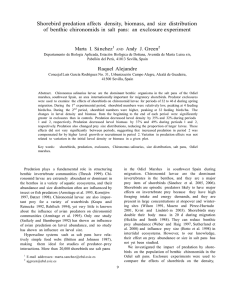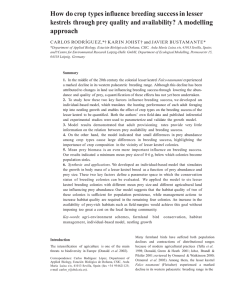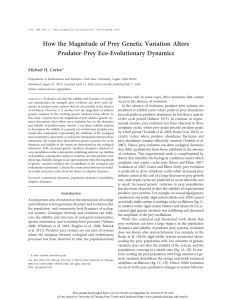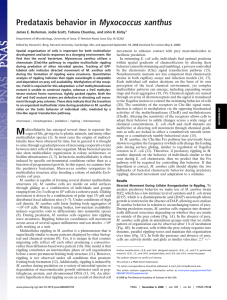14.3: Factors Affecting Population Change pg. 671
advertisement
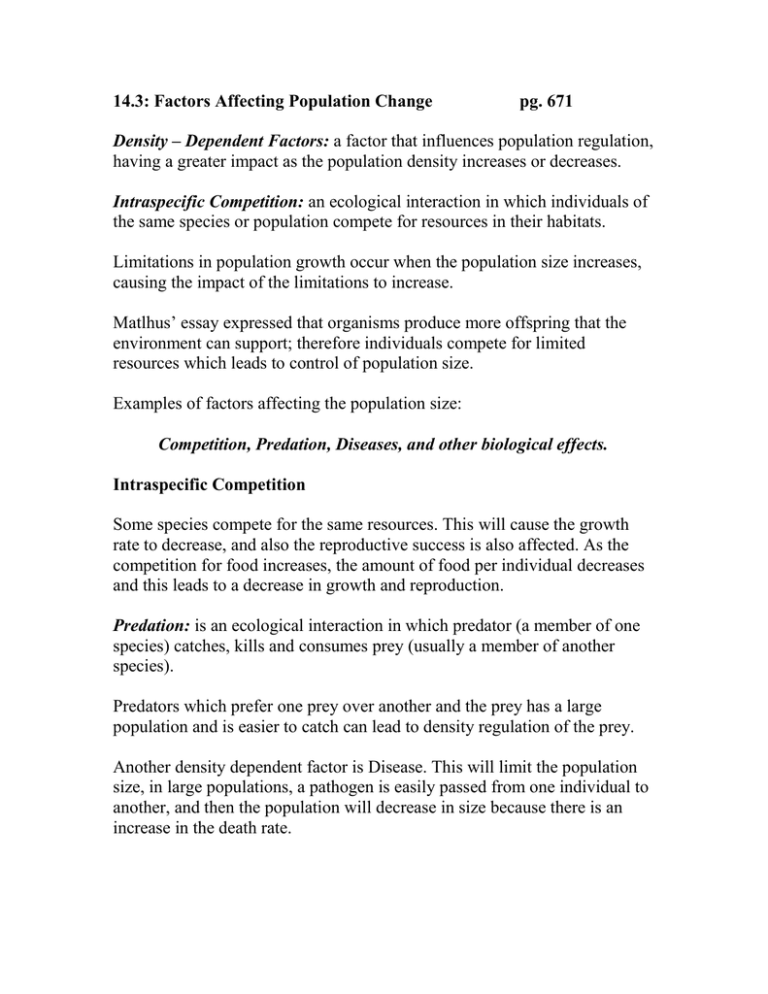
14.3: Factors Affecting Population Change pg. 671 Density – Dependent Factors: a factor that influences population regulation, having a greater impact as the population density increases or decreases. Intraspecific Competition: an ecological interaction in which individuals of the same species or population compete for resources in their habitats. Limitations in population growth occur when the population size increases, causing the impact of the limitations to increase. Matlhus’ essay expressed that organisms produce more offspring that the environment can support; therefore individuals compete for limited resources which leads to control of population size. Examples of factors affecting the population size: Competition, Predation, Diseases, and other biological effects. Intraspecific Competition Some species compete for the same resources. This will cause the growth rate to decrease, and also the reproductive success is also affected. As the competition for food increases, the amount of food per individual decreases and this leads to a decrease in growth and reproduction. Predation: is an ecological interaction in which predator (a member of one species) catches, kills and consumes prey (usually a member of another species). Predators which prefer one prey over another and the prey has a large population and is easier to catch can lead to density regulation of the prey. Another density dependent factor is Disease. This will limit the population size, in large populations, a pathogen is easily passed from one individual to another, and then the population will decrease in size because there is an increase in the death rate. Allele Effect: is a density dependent phenomenon that occurs when a population cannot survive or fails to reproduce enough to offset mortality once the population density it to low; such populations usually do not survive. If the population is too small, it may become difficult to find mates or there will be low reproduction success. Density – Independent Factors Density independent factors are factors that influence population regulation regardless of population density. Limiting Factors: are essential resources that are in short supply or unavailable. Human intervention or extreme weather changes are examples of density independent factors. An increase in temperatures may impact species that prefer certain temperatures to breed. Insecticides applied by humans can cause Bioaccumulation and lead to a decrease in population size along a food chain. Resources which are in short supply are known as limiting factors can influence the growth rate.

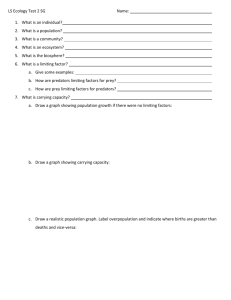
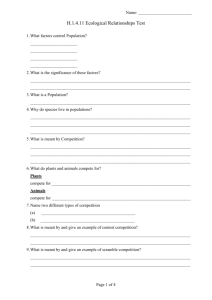

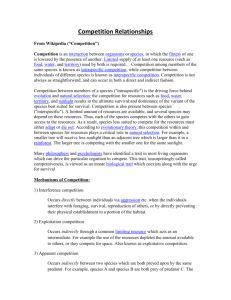
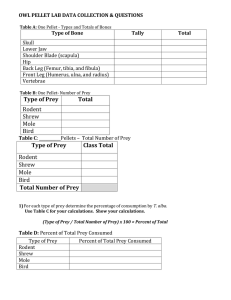
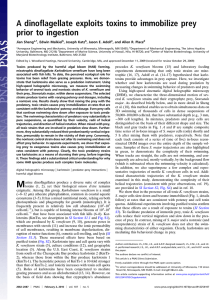
![Cats protecting birds] modelling the mesopredator release effect](http://s2.studylib.net/store/data/018555218_1-21bac9fc37c5fbe61b62d3b1ac3629d0-300x300.png)
